By Dreena Burton of Plant Powered Kitchen
I remember being nervous before our children started school. Not about academics, or peer interactions, but about lunches! Once our children entered school, the reality wasn’t as scary as I had imagined. Much like making that transition to eating vegan – our “thoughts” about how we might manage are far more intimidating than actually living it.
The biggest concern I think most of us have is “what will we pack in their lunches”? With considerations of peanut, nut, and other food restrictions at most schools – and also being mindful of social interactions – some planning is necessary. With a little prep work, plant-powered lunches are not complicated… and you can feel good about your children being well nourished during a long school day.
School
There are a few things you can do to be prepared once your child begins preschool or school:
- Primary grades and preschool: alk with teachers at the beginning of school about your diet. Most teachers are very understanding—and some, very supportive. Many are so used to managing allergy issues in their class that they are very receptive. They expect to make modifications for party days and other food-related events for allergies, and so they are usually very understanding when you explain that your child doesn’t eat dairy, eggs, or meat. I have always explained to teachers that I will be sure to respect food allergies, and even though we are vegan our child will not bring nut-based foods to class (there can be some presumption that there are no other alternatives for sandwiches other than pb&j once eliminating meat, dairy, and eggs). Also, provide a stash of “treats” for your child for party days and other food-related celebrations. During primary grades, I left a treat bag with my daughter’s teacher. When candy or cookies were being distributed for a birthday, Halloween, or Christmas, the teacher would pick out a treat from the bag for our daughter. I included such things as small dairy-free chocolate bars and small boxes or pouches of vegan cookies.
- Beyond Primary: Once your children are older, they are capable of explaining their food choices if situations arise with friends and the teacher, and also of notifying you of special events requiring food planning. There are also plenty of opportunities to share your vegan food with the classrooms if you want, for parties or bake sales. This gives your children the chance to show their friends that plant-based foods are delicious! Sure, some kids might have attitude and say something rude about eating vegan. We’ve had a few unkind comments, but that lack of understanding is part of eating differently from the norm. Try to view these less-than-impressive moments as opportunities to talk to your children about why people, even kids, may say hurtful things because they are uncomfortable, defensive, or do not fully understand. These situations are the exception, as most children, parents, and teachers are open and understanding, and sometimes even interested and supportive.
- Know the Playing Field: Our children have been eating plant-based since birth, so our diet is very ‘normal’ to us, and I often forget how many families eat on a meat- and dairy-centric diet. Be aware of what your children will see their friends eating at school. Some of the things you will see in school might make you feel you stepped into a bad food documentary. Like a school version of “Super Size Me”. When I’ve been at school around lunch and snack times, I regularly see neon-colored foods, cheese strings and yogurt tubes, snackables, wagon wheels, and more. It’s unsettling to see kids eat so much packaged and processed foods, but it’s important to be aware for your own children and discussions about dietary habits. Unfortunately, many refined and processed foods circulate through schools. They may be convenient, but at the expense of our children’s health, lacking any substantive nutrition and instead delivering doses of artificial colors, flavors, high levels of sodium, saturated and hydrogenated fats, refined sugars, and refined flours. It certainly takes some time to shop and prepare more healthful lunches and snacks, but it’s worth it. Not that you have to prepare everything from scratch. There are some quick fixes to pack in lunches, but there are healthier alternatives.
- Hot Lunch: Is there anything nutritive in hot lunch menus? Ok, there might be a sushi selection and some fresh fruit. Other than that it is white pasta, white bread, cheese, milk, deli meats, fat, sugar, cheese – cheese – and more cheese. Still, our children want to fit in, and not feel too different from their peers. For the early grades with our daughters, when that peer ‘likeness’ was important, I would do my best to “match” their hot lunches. While the hot lunch choices are essentially junk, you can still try to mirror them with healthier choices. For instance, on hot-dog days, pack up a veggie hot dog in a whole wheat bun or wrapped in a whole wheat tortilla. That cheese pizza can be shown up with a whole wheat crust version, topped with vegan cheese, veggies, and chickpeas, or even with a nut cheese (if nuts are permitted). Or if you have a couple of slices of a healthy, leftover take-out pizza, send that along. Leftovers of pasta come in handy for those pasta hot lunch days. Add protein-rich additions such as seeds, beans, or tofu or tempeh, if you like. And, it doesn’t really matter if the lunch isn’t ‘hot’. Most kids don’t care what temperature their food is… they are just happy to eat some of their favorite foods.
At Home
A little advance planning is key for preparing lunches daily for your family. I make lunches for our children and also for my husband throughout the week. Here are some things I’ve learned along the way that make the process easier:
- Get Your Containers In A Row!: If you are making lunches for a couple of people, you need a good stash of lunch containers. What you choose is entirely up to you. Some folks like fitted and aluminum containers, or cute little lunchboxes. I too joined the Laptop Lunchbox sensation set off by the highly creative Jennifer McCann some years back. They are cute and handy boxes, however I found it was too easy to lose a cover or component and that required ordering extra pieces later on. Now, I simply use an assortment of ziploc (and similar) containers. I have a few sizes, smaller ones for fruit and snacks like Tamari Roasted Chickpeas, and then many squarish ones for sandwiches, wraps, and the like. I like these containers because they are pretty durable and last a while, but also inexpensive enough that you aren’t annoyed if one is lost or left behind somewhere (happens more often than you think)! Maybe flexible fabrics might be more your thing, like these Fresh Snack Packs. If you’re one to pack hot soups, then you should have a few thermos containers on hand as well.
- Make-lunch-when-you-make-lunch. My girlfriend Tanya once said to me, “I cannot stand having to pull out more food and pack lunches in the night.” I said, “You’re doing extra work . . . pack the lunches at lunchtime.” When I get to prepping veggies, fruit, sandwiches, and so on, for lunch during the day, I get together the lunches for the next school day. That way, I’m not doing the same job two times in one day – and also not stressed trying to get lunches packed in the busy morning hours before school begins. I explained to my girlfriend that she might as well get lunches prepped for the next day while she has all the lunch fixings out for that day. It does require planning and having an extra half-hour or more to get the lunches in order and packed, but it’s worth it not to dirty up your kitchen again at the end of the day. This means on Sundays I am making lunches for that day and also for Monday. So, you can bet my kitchen is one crazy mess of food and food containers! I’ll admit, Sundays are a ‘pita’ for me. But, it gets the job done more efficiently. If it works better for you to prep lunches at dinner hour, then go that route. Either way, you won’t have a kitchen to clean again in the evening, or worse, in the morning, when you’re already squeezed to get the kids out the door!
- Power and Batch-Cook: If you have a day or two during the week or on the weekend, when you can carve out dedicated kitchen time, use it. Prepare multiple batches of dips or spreads, soups and stews, baked goods like snack bars or muffins, and other foods that are your household favorites. When possible, double or triple recipes that can be used in lunches. Muffins, healthy cookies, hummus, and other snacks can appear in several lunches through a week. Also, when preparing things like grains, pasta, potatoes, and sweet potatoes – always make a little more than you need for any given meal. Having leftover pasta, whole grains, potatoes, etc, can always be reworked into a healthy lunch.
- Save small leftovers. Most of us save appreciable amounts of leftovers, but we may not keep smaller amounts to refrigerate. What’s the point—what can you do with them, right? Well, lunch boxes are a welcome home for small amounts of foods. After all, kids love to nibble on different things, and I can often make a lunch around nibblers of roasted potatoes, bean dips, baked beans, rice, a few pieces of tofu, and more. Think about how quickly you can make a wrap with last night’s leftovers of a few tablespoons of rice along with a sprinkling of beans, a drizzle of tahini sauce, and some grated or chopped veg. Voilà! A tasty, tidy wrap that made use of your “rice scraps.” Or pair those roasted potatoes with some cubed tofu or chickpeas and add to a vegan soup (like Amy’s alphabet soup).
- Stocked Pantry: Seems obvious, but it is all-too frustrating to begin lunch preparations only to find you are out of beans, bread, or tortillas for wraps. Keep your staples in regular rotation – maybe pick a time on the weekend to stock up on the staples you know you’ll need that week – or for the month. Many natural food stores offer discounts if you buy bulk or case lots.
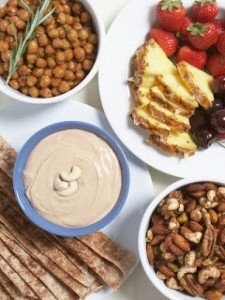
Lunchbox Solutions
Here I’ll give some ideas about specific lunch meals you can prepare for your children. These topics are expanded in my cookbook Let Them Eat Vegan.
- Wraps. Wraps are easy for the kids to eat, and can be filled with ingredients, such as baked beans, refried beans, chickpeas, lentils and other beans, corn, chopped or grated raw veggies], whole grains, and/or chopped leftover baked or roasted potatoes. Also, wraps are a good way to sneak in veggies they might not otherwise eat, plus other nutritional add-ins such as tahini and nutritional yeast. Use whole-grain tortillas, nori, or – if your kids are green leafy stars (I’m talking to you, Christine) – wrap fillings in kale or collard leaves.
- Bean Dips – and yes, Hummus! Typically I make triple (or quadruple) batches of hummus, and freeze one or more containers. Hummus (more recipes in my books too) thaws brilliantly – just takes a little time – so give this time-saver tip a try. Not just for dipping with pitas and veggies, hummus can also be used in sandwiches as a spread, in wraps, as a layer on pizzas to hold veggies, or even mixed with grains such as rice or into pasta. Hummus is truly a lunch lifesaver. Make it your friend (and make it yourself; it’s much cheaper and far tastier).
- “PB&J”. I doubt any schools still allow peanut butter. But some allow nuts, and if not, seeds are usually permitted. So, try different nut and seed butters in sandwiches. Since seed butters can be bitter, try adding ground cinnamon to make them naturally sweeter, and a splash of pure maple syrup. dAlso, look into organic soy nut butter spreads— there are even varieties that contain cocoa, for a special treat. Use with whole-grain breads, crisp breads, pitas, tortillas, etc.
- Soups and Stews: Soups make a hearty, satisfying lunch for your kids. If you didn’t get to batch-cooking on the weekend, there are some wholesome store-bought alternatives that are also timesavers. I often like to add some cooked beans or whole grains to these soups, to boost the nutritional value. I have many hearty soups in my books. Some kiddo faves are “One While Chick Soup” and “Mellow Sniffle Lentil Soup” from ed&bv, and “Tomato Lentil Soup with Cumin and Fresh Dill” (doesn’t sound kid-friendly, but is!) and “Kids’ Cheesy Chickpea and White Beans Soup” in Let Them Eat Vegan (and more examples to follow).
- Sauce It Up!: Kids love to dip and dunk, so send small containers with lids filled with some of their fave sauces, like tahini or other seed/nut-based sauce, tomato sauce, “KD Dip”, or a homemade sauce/salad dressing, or maybe a container with nutritional yeast for sprinkling! Our girls love nutritional yeast mixed with tahini sauce… whatever works, right? And, our girls do not really love pasta (tomato) sauce. But, if I add in a splash of balsamic vinegar, they enjoy it much more! All these sauces can also be used to mix into whole grains or pasta, along with veggies/seeds/beans/tofu, etc. As I often say “a sauce makes a meal”!
- Grain Bowls: Much like how most vegan restaurants have a “Buddha Bowl”, you can make something similar for lunches. This is where batch-cooking comes in handy. Cook more grains than you need for a given meal, so you have extra stored in the fridge during the week. Start with a whole grain/psuedograin – quinoa, millet, brown rice, wild rice, etc – and add in fave veggies (I use frozen peas a lot – simply thaw in a bowl of boiled water, then drain and toss in), – or even fruits like chopped grapes or berries, along with any other nutrient-dense add-ins like hemp seeds, sunflower seeds, pumpkin seeds, beans, tempeh cubes, etc. Here is where you can add some of those zippy sauces! Pack in a sealed container with a fork/spoon – read to go!
- Pasta Bowls: Much of what you can do with a grain bowl works equally well for leftover pasta. I always cook extra pasta (either whole-wheat, kamut, or brown rice), and store in a container in the fridge. When making lunches, the pasta will be a little tough/chewy after refrigerating (especially brown rice pasta). Simply place in a big bowl, cover with boiled water, then drain after a minute. It will soften the pasta again, and also make it more amenable to coating with sauces/seasonings. If find the cut shapes (rotini, penne, etc) work best for lunches, easier and neater for little ones to eat than long noodles like spaghetti.
- Veggies: If your kiddo is really picky about veggies, try grating them fine – very fine… or mincing in a mini-food processor until almost a pulp, and mixing INTO dips, spreads, nut butters, tofu or chickpea sandwich mashes, or into those grain bowls, pasta dishes, wraps, and more. Yeah, they might notice them – but they will be too tiny to pick out, and if they like the overall flavor of the dish, they will eat it. And, if added to a pasta with other items they love (dried fruit, tamari roasted chickpeas, tofu cubes), they will more likely accept!
- Breakfast Foods: Some children love to have some breakfast foods like pancakes, french toast, tofu scrambles, or “momelets” in their lunchboxes. If you prepare a batch or two on the weekend, it can carry you over two or more lunches during the week.
- Savory sandwiches. If you have leftover grilled or baked tofu, pulse it through a mini-food processor and then mix in chopped veggies and condiments and use as a sandwich filling. Or simply use slices in sandwiches, with a tahini spread, hummus, or other condiment to hold the tofu in place. Chickpeas can be mashed or pureed and again mixed with veggies and condiments for a hearty sandwich filling, and one that looks not much different from the egg or tuna sandwiches other kids might be eating. Grilled cheese sandwiches are a favorite, and you can use any vegan cheese you prefer, or a nut or seed cheese in place of a commercial vegan cheese. Let cool before packing, and include a small container of ketchup for dipping. If your child is a true veggie lover, make simple sandwiches with chopped, sliced, or grated fresh veggies. Use whole grain/sprouted breads (I love Silver Hills), or whole-grain pitas or bagels. Leftover homemade veggie burgers (like these Sneaky Chickpea Burgers) also slip between two slices of bread for a hearty sandwich!
- Fruit: Fresh fruit is an obvious choice, especially easy-to-eat fruit such as grapes, strawberries, and orange segments. But others such as cubed melon, plums, kiwi wedges (the kids can eat them like an orange), and half a mango (scored) are welcome changes. Also try replacing raisins with other dried fruit such as apple slices, mango, or apricots. Choose unsulfured and organic whenever possible.
- Baked Goods: I am always doing double batches of some variety of muffin, mini-muffin, healthy cookie, snack bar, etc. I give many examples at the end of this post of recipes from my books.
- Store-bought items. Lunches and snacks are made even easier with a few prepared items: healthier granola bars, dairy-free yogurts, whole organic fruit bars, unsweetened applesauce cups, crackers, and other more natural snacks. And, while foods like Daiya cheese, cheese spreads, and veggie dogs are more processed, there is nothing wrong with incorporating them occasionally, especially on those joyous “hot lunch” days! I particularly like the Wayfare brand of cheese spread. It is oat-based, the ingredients are not from some science experiment, and it works really well for a sandwich/wrap spread to “hold” other ingredients when you are plum out of hummus!
- Nibbly Bites: Kids love finger foods, so things like beans (for our kids, that means Tamari Roasted Chickpeas, Cinnamon Tortilla Strips (pictured), Softly Spiced Nuts (if nuts permitted, or you could sub seeds and dried fruit in this recipe), small bites of tofu, tempeh strips (I simply bake these in the toaster oven on a parchment-lined tray until lightly browned), or seitan, sheets of nori, seaweed snacks, raw crackers, or whole-grain/raw cereals. Kaia has a line of raw snacks, and some may be just right for your lunchboxes, like ‘salt and vinegar pumpkin seeds’!
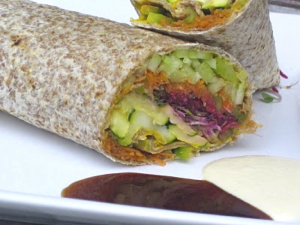
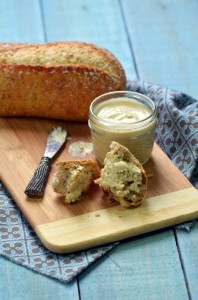
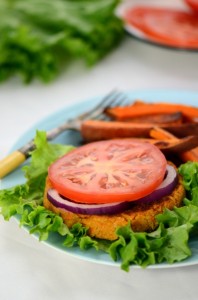
More Recipes
I thought I’d point out some very lunchbox-friendly recipes from each of my books (note some you might want to omit/reduce fresh herbs and garlic depending on your picky-poo’s, and modifying for nut allergies where needed. Some of these will work wonders if you make extra and have leftovers…
- The Everyday Vegan: Egg-less Sandwich Filling, Lentil Veggie Wraps, Marinated Tofu Sandwich Filling, Black Bean Millet Patties, “Neat Balls”, Quick Roast Green Beans (and Peppers), Roasted Baby Potatoes, Tasty Tofu Tidbits, Apple Swirl Loaf, As-You-Lke Muffins, Carrot Pineapple Muffin Tops, Maple Banana Bread, Pumpkin Raisin Loaf, Tropical Rice Pudding, Swallow-It-All Banana Balls.
- Vive le Vegan: Fantastic French Toast, Apple-Hemp Muffins, Banana Oat Bundles, Carob Chip Muffins, Easy Pleasin’ Oat Bars, Energy Cookies, Hemp Sprinkle, Sesame Mustard Tahini Sauce, Creamy Hummus, Lemon Herb Tofu (omit herbs for fussy ones!), Earthy Lentil Soup, Last-Minute Chili & Taco Filling, Molasses Baked Beans, Sunflower Lentil Pie, Delish Date Squares, Fudgy Brownies, Homestyle Chocolate Chip Cookies, Kamut-Hemp Chews.
- eat, drink & be vegan: Cocoa Banana Muffins, Hemp-anola (for dry snack), Raspberry Chocolate Chip Scones, Kids’ Dynamo Hummus, Olive & Sun-Dried Tomato Hummus, Cinnamon Sweet Tortilla Strips, Tamari Roasted Chickpeas, Lemon Chickpea Lentil Soup, Mellow Lentil ‘Sniffle’ Soup, Monkey Minestrone, One Wild Chick Soup, Goddess Garbanzos, PB (substitute sunflower or other nut butter) Tortilla Turnover, Tamari Tease Chickpea Spread, White Bean Spread, Chickpea Sensation Patties, Hide-the-Lentils Tomato Sauce (with pasta), Spicoli Burgers, Rosemary Cornmeal Polenta Fries, Gluten-Be-Gone Homestyle Chocolate Chip Cookies, Jam-Print Cookies, Nice Krispie Squares, “Nicer” Krispie Squares, Super-Charge Me! Cookies.
- Let Them Eat Vegan: BF Blueberry Muffins, Coconut Banana Muffins, Pumpkin Oat Muffins, Oat ‘n’ Applesauce Muffins, Chia Banana Muffins, Strawberry Goji Muffins, Whole-Grain Chia Pancakes, Apple Hemp Spice Pancakes, Cocoa Goji Granola, Wholesome Oat Snackles, Proper Healthy Granola Bars, Monsta Cookies, Cocoa Cookie Dough Balls, “Momelet”, Three-Bean Salad, Artichoke and White Bean Dip, KD Dip and entire “Saucy and Dippy” chapter!, Cheesy Sprinkle, Tomato Lentil Soup with Cumin and Fresh Dill, Kids’ Cheesy Chickpea and White Bean Soup, French Lentil Soup with Smoked Paprika, Pureed Squash Sweet Potato and Celeriac Soup, Sunshine Fries, Roasted O&V Potatoes, Smashing Sweet Spuds, No-fu Love Loaf, Wonder Bean Puree (with rice – not prettiest dish in book, but our girls LOVE it!), Tempeh Tickle, BBQ Sunflower Tofu, Chickpea Pumpkin Seed Burgers, Mediterranean Bean Burgers… and TOO many cookies to mention! ;)
- Other recipes on my blog: Chickpea Salad Rolls (for sandwich filling), Cinnamon Cookie Dough Squares, Chocolate Chia Pudding, No-Dehyrator Kale Chips.
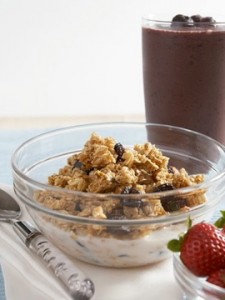


Hopefully these recipes – along with the tips provided – will make packing lunches easier, a little more delicious… and a lot more nutritious!
This article was written by vegan author Dreena Burton of Plant Powered Kitchen. Visit her site, join her Facebook community for daily tips and recipe links, and also check out her as her new ebook, Plant Powered 15.
